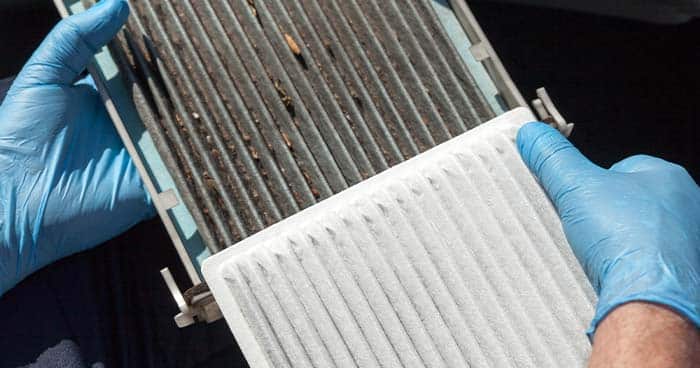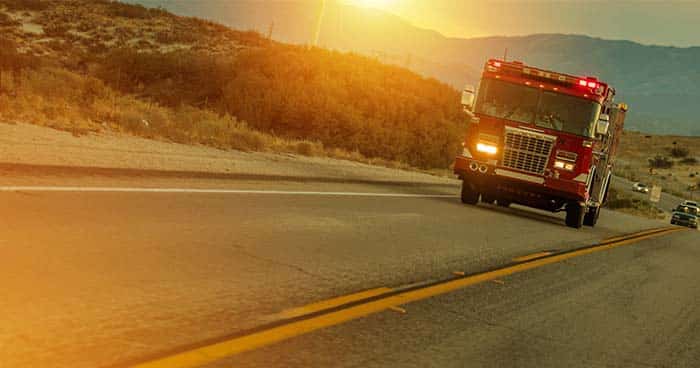In the past, Californians have been preparing for seasonal wildfires each year by taking precautions inside and outside of their homes. This used to be from the end of June to early July through October.
This season slowly started earlier and ended later. Now, there really isn’t a fire season – they’re fire years.
At any time, a wildfire can break out in California. The summer season is still peak fire season in California, but locals need to be prepared at any time.
Prepare the Outside of Your Home
Move Flammables 30+ Feet Away from the Home
All flammable objects, including oil or gas cans, propane tanks, wood piles, and lawn mowers should be moved at least 30 feet from your home at any time, so you’re prepared when a wildfire strikes. If there is wildfire activity, move any flammable toys, furniture, or other items.

Clean Out All Gutters
Gutters, roofs, decks, and patios can be a haven for leaves or pine needles, which are flammable. Keep these areas clean and clear of debris to minimize your risk of a fire in your home.
Keep Flammable Vegetation 5+ Feet Away from the Home
Mulch and flammable vegetation, such as eucalyptus, ornamental grass, rosemary, and cypress, should be kept at least 5 feet away from your home. Plant fire-resistant plants close to your home as a privacy screen and reduce fire risk.
Trim Your Trees and Shrubs
Remove tree or shrub branches that overhang within 10 feet of your home, roof, or chimney. Keep these plants trimmed throughout the year to be prepared for sudden wildfire activity.

Keep Grass Short
It’s important to keep your lawn well maintained and short to reduce fire risk. Water it regularly, but if you’re water conserving, move any flammable debris outside of that 30-foot perimeter around your home.

Prepare the Inside of Your Home
Make Sure to Close the Fireplace Flue
The fireplace flue is designed to let smoke out of your home when you have a fire. In the case of wildfires, always close the fireplace flue to prevent smoke from entering your home.
Mind Your Indoor Air Quality
Avoid burning candles, incense, or anything else that can degrade your indoor air quality. Your system will be working hard enough with the wildfires that you don’t want to contribute to indoor pollution on top of it.

Seal and Weatherstrip the Windows
Windows with poor weatherstripping can allow clean air to leak out and polluted air to come in. Make sure your weatherstripping is in good condition and seal any cracks or holes in your windows.
Consider a Portable Air Purifier
You may want to purchase a portable air purifier, high-efficiency HVAC, or HEPA filter to prepare for indoor air quality issues during wildfires. Make sure you choose a model that’s appropriately sized for your home or the room it will be in.
Regularly Check and Change Your Air Filter
Your HVAC’s air filter is a vital component for its function and your indoor air quality, especially with smoke pollution. Perform routine maintenance and regularly check and change your air filter to ensure it’s in working order.

Consider an Air Filter with High MERV Rating
If necessary, upgrade to a MERV 13 or higher rated filter to handle wildfires. A MERV 13 filter captures more small particles than a MERV 8 filter, which is essential with the particle pollution that occurs during wildfires.
Make Sure Your HVAC System is Set to “Recirculate” or Close the Fresh Air Intake
If you have a central HVAC system, determine if it has a fresh air intake. If it does, learn how to close it or put the system in recirculate mode. The filter should be in good condition, properly fitted, and recommended by the manufacturer.
Stock Up on N95 Masks
A supply of N95 masks can be a lifesaver in a wildfire. You can find N95 masks in hardware stores or drugstores in the area. Make sure you have enough for your whole family and some spares.

Make a Family Plan
Sign Up for Local Emergency Alerts
Air quality reports, health warnings, and PSAs can warn you of possible fires. Make sure you know all the ways you can get alerts from local authorities.
Establish a “Safe Place”
This is a room in your home with few windows and doors and no fireplace with a portable air cleaner. This can help you establish a room with clean air for your family.
Make a “Go Bag”
Organize important documents, including financial and personal documents, that you may need if you have to leave quickly. Make a plan to evacuate and include all the information you will need for your whole family.
Don’t Forget Any Pets
In emergencies, people often leave their pets behind because of poor planning or a rush. Consider your pets in your evacuation plan and how you can get them out safely.
How Long Does Fire Season Last?
As mentioned, fire season is all year round, rather than just the summers. Californians need to be prepared for wildfire activity at any time, winter or summer, and have a plan in place to keep their families and homes safe.

Contact the pros at Adeedo to help you prepare your home and your HVAC system for wildfire season in California.

